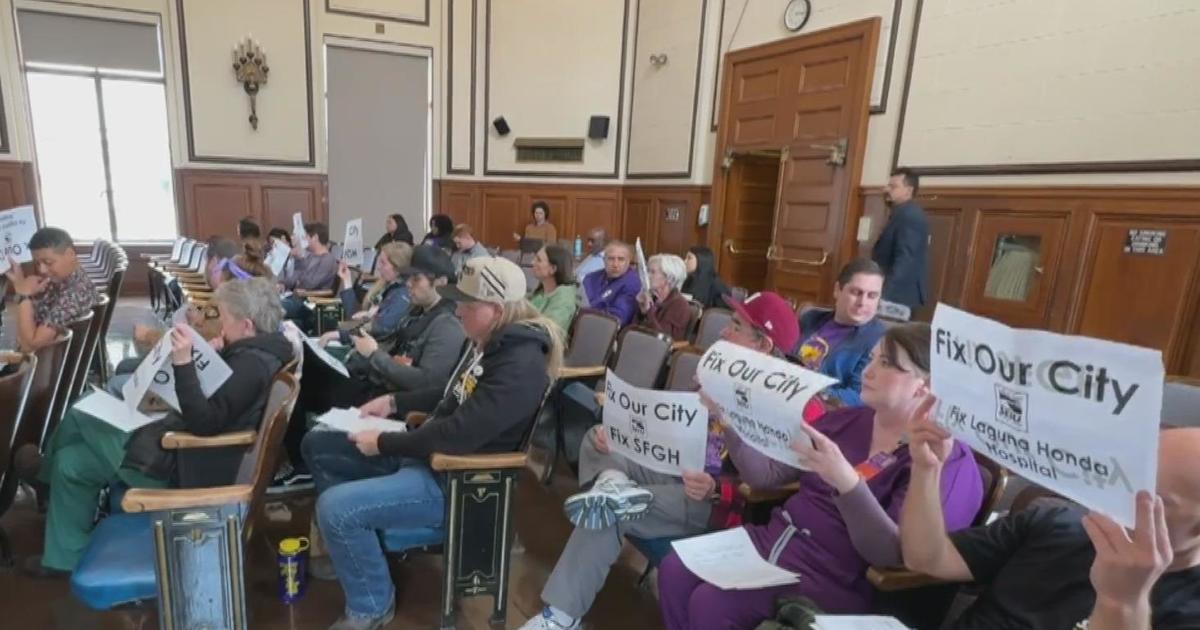SF court of appeals approves mandatory body cams in 6 California prisons
SAN FRANCISCO - Some court cases go on for so long that they take on a life of their own. Few would contest that Armstrong v. Newsom is one of them.
Armstrong was filed in federal court in San Francisco in 1994 on behalf of a class of disabled prisoners incarcerated in state prisons. In a spare 14-page complaint, the prisoners alleged that the state of California violated the Americans With Disabilities Act, by, among other things, denying them equal access to programs and facilities and by failing to make reasonable accommodations for their disabilities.
The court docket reflects that there have been 3,455 pleadings, stipulations, orders, reports and other filings in the trial court in the 29 years since the initial filing, and at least ten trips to the U.S. Court of Appeals for the 9th Circuit.
The trial court found that the prisoners had been denied their rights under the ADA and ordered defendants to produce a remedial plan to correct the violations. After numerous hearings and several appeals, the court approved the plan in January of 2001 and in March of that year enjoined the defendants to implement it.
The injunction did not end the litigation. Over the years, the trial court modified and refined the injunction when the state was shown to have violated its terms.
On Thursday, a unanimous panel of the Court of Appeals affirmed, in great part, two 2020 orders of the district court that required the state to develop plans to remedy ongoing violations of earlier court orders. The plans required, among eight specific remedies, the use of fixed surveillance cameras and body-worn cameras in six state prisons.
The trial court's orders were entered after review of a record that included 87 declarations from 66 inmates incarcerated at R.J. Donovan Correctional Facility in San Diego, and declarations from 75 inmates at five other state prisons.
The declarations, largely unrebutted in the case of the Donovan facility, and only partially rebutted in the case of the other prisons, recounted numerous instances where inmates were denied accommodations or discriminated against because of their disabilities.
Among the "illustrative examples" given by the district court and recounted by the appeals court, was one where "a mobility-impaired class member requested not to be handcuffed behind his back because he used a cane and walker. Instead of granting that accommodation, an RJD officer slammed the class member to the ground, causing him to hit his head on the concrete floor and lose consciousness for several seconds. When the class member awoke, the officer put his knee on the class member's throat and then kneed him in the face."
Others included an officer shining a flashlight in the eyes of a vision-impaired inmate who protested that the brightness was painful, an inmate being punched in the jaw after asking to speak to a sergeant, and another inmate being sprayed with pepper spray after he said he planned to file a complaint over an officer's conduct.
The district court found that the root cause of the ongoing discrimination was a "systemic and long-term failure" to investigate and discipline violations of inmates' rights under the ADA. The eight specific remedies required in the plan were designed to address that failure.
A central issue on appeal was the Prison Litigation Reform Act of 1996, a federal statute designed to curtail what was then perceived to be excessive amounts of prison litigation. That act contained numerous limitations on the power of federal courts to grant relief in cases involving prisoners. Most relevant to the Armstrong appeal were provisions that required that any relief given in a prison conditions case be "narrowly drawn," extend "no further than necessary to correct the violation of the Federal right," and be "the least intrusive means necessary to correct the violation." The three limitations, referred to by the appeals court as "need-narrowness-intrusiveness," shaped the appeals court's opinion.
On the question of need, the court found that the trial court had ample evidence of a need for relief, both from inmates and by way of expert reports. The court also noted that California's Office of the Inspector General found evidence of a flawed and ineffective system for investigating inmate complaints about staff misconduct and a systemwide bias in favor of staff.
On the narrowness and intrusiveness issues, the court noted that less intrusive or directive provisions had been tried in early orders and had not been effective.
"We are now back in a similar spot," the appeals court panel wrote in its opinion.
It found that the eight provisions required in the district court's order were narrowly drawn to address the problem effectively.
The court specifically referenced the appropriateness of cameras.
"With more direct evidence showing what happened during an incident, it will matter less whether investigators are inclined to credit officers' accounts of incidents over inmates' accounts," the panel wrote. "And, as even Defendants' experts noted, the installation of additional cameras will itself help to deter further violations."
While the court approved all the elements of the trial court's order at the Donovan facility, at the other five prisons it carved back two of the specific provisions because it found that the evidence supporting them was thinner than at Donovan. However, the portions relating to cameras was approved at all six prisons.
Gay Grunfeld, plaintiff's lead lawyer, issued a statement after the decision:
"In the midst of ongoing national outrage over police brutality, this decision could not have come soon enough," Grunfeld said. "Body worn and stationary cameras are long overdue inside (the California Department of Corrections). Without them, the code of silence reigns and the statements of incarcerated people are not believed."
A request for comment from the California Attorney General's Office was not immediately returned.



